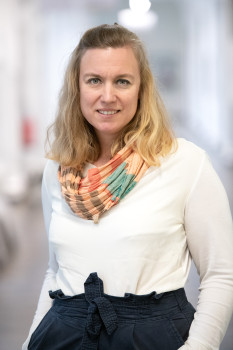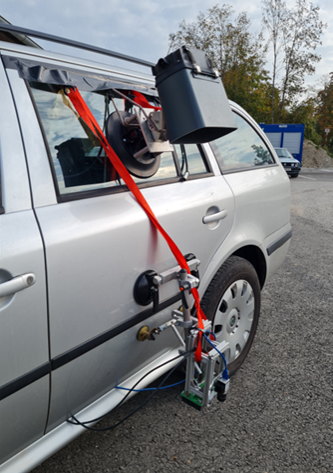Current series-production driver assistance systems up to SAE Level 2 are primarily designed to prevent accidents on dry road surfaces. The legal responsibility for adapting driving behaviour to actual road conditions remains with the driver—such as in the case of automated emergency braking (AEB)—or the system deliberately does not intervene at the dynamic limits of vehicle stability, as seen with adaptive cruise control (ACC). However, from SAE Level 3 onward, conventional strategies are no longer sufficient.
Highly automated vehicles, such as the Mercedes EQS and Google Waymo, currently impose significant operational restrictions in adverse weather conditions.
The primary objective of the SenseRoad_AD research project was to develop a robust sensor fusion approach, integrating Time-of-Flight (ToF) camera technology with vehicle dynamics state observers. This combination enables real-time assessment of tire-road conditions during operation.
Through collaboration between the Institute of Automotive Engineering at TU Graz, Infineon Technologies AG, and AVL List GmbH, the project achieved several significant milestones over its three-year duration:
The most significant challenge in this project was adapting the Time-of-Flight camera for external vehicle use. The system’s robustness against vibrations and its expected predictive range could not be fully achieved within the project timeline, indicating the need for further technological advancements.
However, the sensor fusion approach demonstrated substantial potential, proving the benefits of integrating vehicle dynamics observers with an optical sensing system. The results of this 2024-completed research project will contribute to enhancing the safety of both human-driven and automated vehicles, while also reducing weather-related operational limitations.
»Customers will not accept it if vehicles switch off automated driving functions in poor weather conditions. These conditions in particular are also challenging for drivers. Manoeuvres such as evasive actions and braking are critical to safety and must be planned with precise information.«
 Portrait Cornelia Lex © TU Graz
Portrait Cornelia Lex © TU Graz
Cornelia Lex
Associate Professor, Institute of Automotive Engineering, TU Graz
 |
 |
| Setup for the time-of-flight camera and reference sensor during the testing in St. Valentin on the Digitrans site © Cornelia Lex | Exemplary test surfaces of the Digitrans site © Cornelia Lex | |
The research that led to these results was funded by the programme “Mobilität der Zukunft”. ”Mobilität der Zukunft” was a research, technology and innovation funding programme of the Republic of Austria, Federal Ministry for Climate Action, Environment, Energy, Mobility, Innovation and Technology (BMK). The Austrian Research Promotion Agency (FFG) was commissioned to manage the programme.